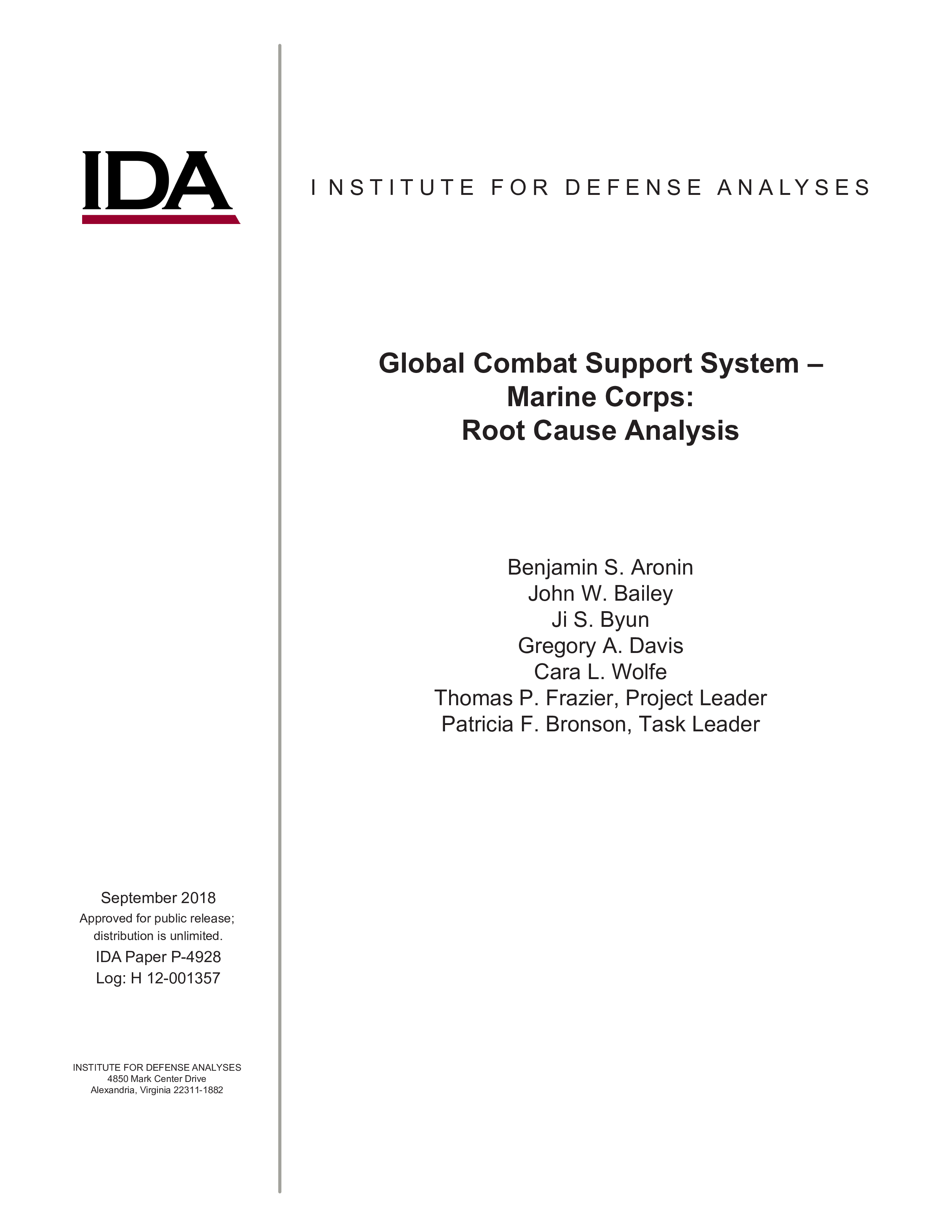The Institute for Defense Analyses performed a root cause analysis of the critical cost overrun and schedule slippage experienced by Increment 1 of the Marine Corp’s Global Combat Support System (GCSS-MC) program, an Enterprise Resource Planning (ERP) software system that will provide logistics support for Marine Corps combat operations. We visited the program office and met with contractors concerning the past and current status of GCSS MC. We also researched Operational Requirements Documents, Major Automated Information System Quarterly Reports, Approved Program Baselines, Initial Operational Test and Evaluation reports, Defense Acquisition Executive Summary reports, Government Accountability Office reports, and US Navy and US Marine Corps websites. Our primary findings were that (1) the program was initially significantly underfunded either because available funds were deemed sufficient by necessity or because the original planners did not understand the true scope and cost of the required ERP implementation, and (2) the original program scope was unrealistically narrow and thus lacked a sufficiently high-level mandate to ensure that the necessary business process changes would be adopted. Therefore, some of the cost growth can be attributed to unrealistic initial cost estimates and the balance can be attributed to inefficiencies caused by failed development and organizational change approaches that were not suited to the true size of the problem. The primary sources of unexpected cost and complexity were two technical requirements that proved to be particularly difficult and expensive. The first was the requirement to deploy ERP clients on detached, tactical networks, and the second was the requirement to provide users with access through both classified and unclassified systems and networks. Neither of these capabilities was available in off-the-shelf ERP products and both are unsolved as of the time of this report.

